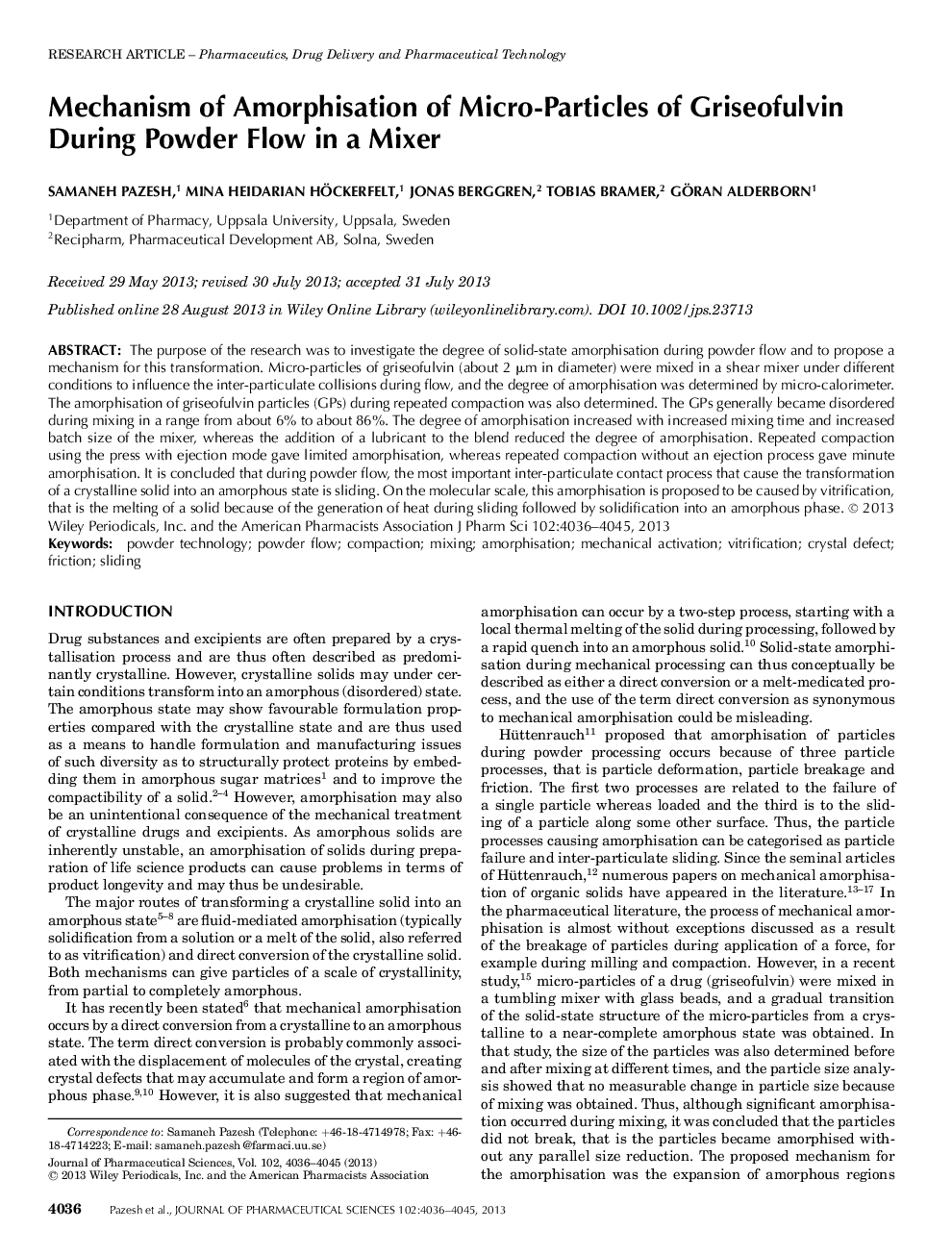| Article ID | Journal | Published Year | Pages | File Type |
|---|---|---|---|---|
| 2484788 | Journal of Pharmaceutical Sciences | 2013 | 10 Pages |
Abstract
The purpose of the research was to investigate the degree of solid-state amorphisation during powder flow and to propose a mechanism for this transformation. Micro-particles of griseofulvin (about 2 μm in diameter) were mixed in a shear mixer under different conditions to influence the inter-particulate collisions during flow, and the degree of amorphisation was determined by micro-calorimeter. The amorphisation of griseofulvin particles (GPs) during repeated compaction was also determined. The GPs generally became disordered during mixing in a range from about 6% to about 86%. The degree of amorphisation increased with increased mixing time and increased batch size of the mixer, whereas the addition of a lubricant to the blend reduced the degree of amorphisation. Repeated compaction using the press with ejection mode gave limited amorphisation, whereas repeated compaction without an ejection process gave minute amorphisation. It is concluded that during powder flow, the most important inter-particulate contact process that cause the transformation of a crystalline solid into an amorphous state is sliding. On the molecular scale, this amorphisation is proposed to be caused by vitrification, that is the melting of a solid because of the generation of heat during sliding followed by solidification into an amorphous phase.
Keywords
Related Topics
Health Sciences
Pharmacology, Toxicology and Pharmaceutical Science
Drug Discovery
Authors
Samaneh Pazesh, Mina Heidarian Höckerfelt, Jonas Berggren, Tobias Bramer, Göran Alderborn,
